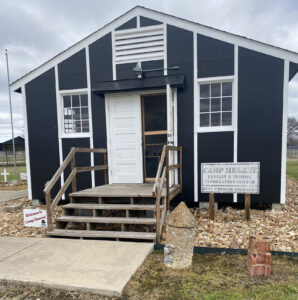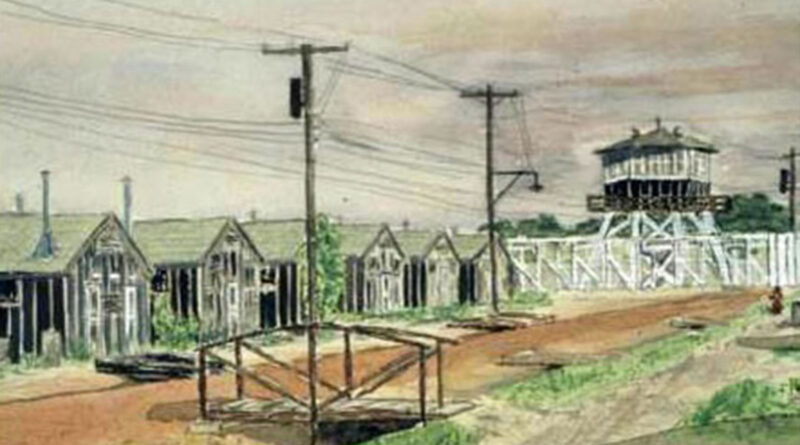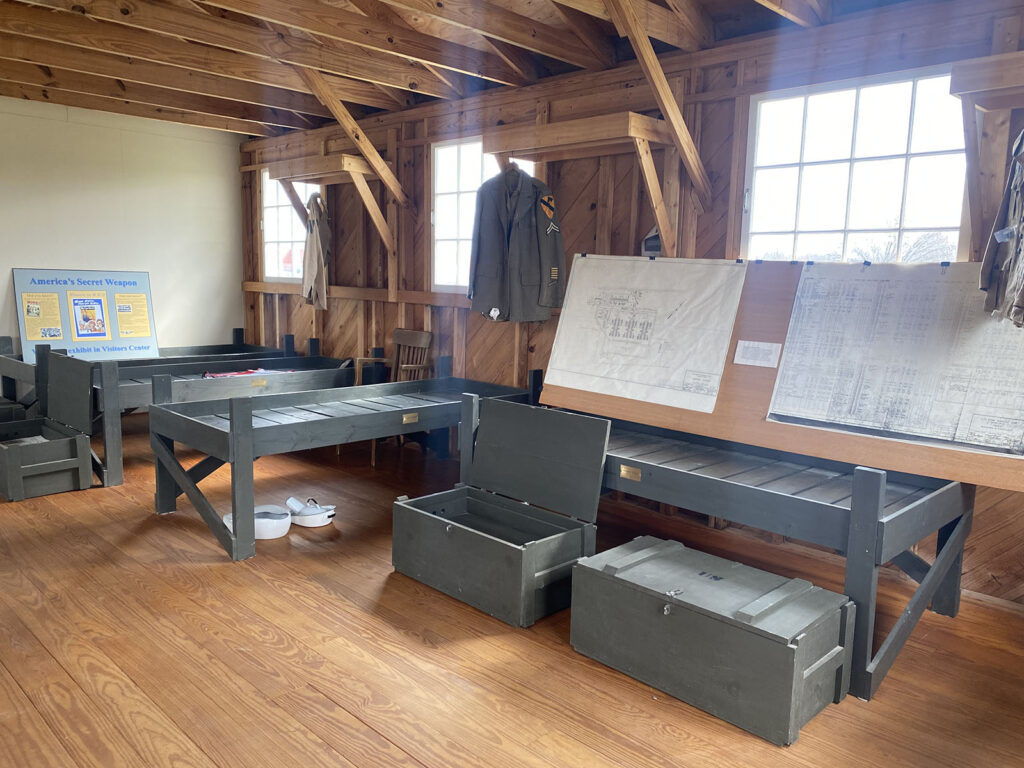Camp Hearne’s History
Central Texas Site housed German POWs during WWII
Story and photos by RHONDA BLACKLOCK-BAVAS
 The United States entered World War II after Japan ruthlessly attacked Pearl Harbor on Dec. 7, 1941. President Franklin D. Roosevelt and his advisers didn’t waste time preparing to send our men and women to war.
The United States entered World War II after Japan ruthlessly attacked Pearl Harbor on Dec. 7, 1941. President Franklin D. Roosevelt and his advisers didn’t waste time preparing to send our men and women to war.
As a child, I remember learning about our Army in European countries such as France, Germany and Italy. I remember reading about our Navy and Army Air Corps fighting in the South Pacific. After becoming heavily interested in my family history, I learned about my grandmother’s uncle, Pete Garrett, who was a pilot in the U.S. Army Air Corps. He was shot down somewhere near the Philippines, but that is not where he died. His story, along with thousands of other allies, breathes tragedy and heartbreak for those left behind. As a Japanese prisoner of war, he was crammed onto a ship, commonly referred to as a Japanese hell ship. There, the prisoners were starved, faced illness without treatment, and experienced heat exhaustion, among other horrifying maladies.
It gets worse. Tragically, a U.S. submarine torpedoed the ship. By mistake? Most likely. The torpedo impacted with great destruction, but miraculously, most prisoners survived and remained captivity. The Allied prisoners ended up in the South China Sea, alive, but not for long. In the following moments, Japanese soldiers began shooting and killing the prisoners, including my great-great uncle.
The Japanese were not alone in taking prisoners. The U.S. military also captured and held POWs. Our troops were fighting overseas, so where did they hold them? I discovered one place by chance recently when I was driving through Robertson County, Texas, just outside of the small town of Hearne. I came upon a sign for Camp Hearne. When I stopped for breakfast at Penny’s Diner (a great little diner by the way) I did what I always do when curious, I got on Google and searched. Camp Hearne was a WWII POW camp. What?? A POW camp in Central Texas?
After breakfast, I backtracked to the sign and took the little dirt road to what remained. The historical site still had a few of the original buildings, an overlook tower and an exhibit. The sign said “open Wednesday-Saturday 11am-4pm.” RATS!! It was only 9:30. I spent the next hour and a half driving through Robertson County, taking in as much history as I could, but my mind was elsewhere. It was still at Camp Hearne. Time moved quickly and before I knew it, I was meeting Melissa Freeman, whose knowledge about the camp, the U.S. soldiers who guarded it and even a few of the POWs themselves, was magnificent. What I learned surprised me.
The First POWs
After the U.S. built up their troops in 1942-43 and successfully campaigned in Northern Africa and Italy, an estimated 432,000 POWs were brought back to the United States.
Why was Camp Hearne chosen? According to its website, it had flat terrain, distance from the coastline, railroad access, sparse population and local need for farm laborers. Many of the POW camps were built in the southern portion of the United States because the Geneva Convention required prisoners be put in locations like where they were captured, seeking climate similarities so prisoners would be dressed appropriately. Camp Hearne received some of the first POWs on June 3, 1943.
The once 711-acre camp is now a 67-acre replica. During the war there were three POW compounds and a hospital. Unlike the Japanese, Americans followed the rules of the Geneva Convention and treated their POWs with dignity. Many of the POWs were officers, thus excluding them from any labor needed by local farmers. The enlisted POWs who stayed at Camp Hearne made a fair wage. To pass the time, imprisoned officers built fountains and a stadium-style theatre where POW orchestras performed. They created a POW soccer league and a tennis court.
I have always had the mindset that during WWII, the men and women fighting against our troops were ordinary humans, like us, just doing their patriotic duties, whether their leaders were wrong or right. While pondering the lives of the Germans who found themselves imprisoned at Camp Hearne, I learned of another tragic story.
Hugo Krauss was German born, but his family immigrated to the United States when he was a child. He returned to his home country in 1939 to fight for Germany. When he was captured and brought back to the United States, he openly criticized the Third Reich. Many of the captured German officers remained loyal to the Nazis, and somehow controlled the other POWs, pushed propaganda within the compounds, infiltrated a postal system, and secretly punished any German POWs who were disloyal. Krause saw through the propaganda and took a stand, and for it, he was beaten severely and died from the injuries he suffered. Seven other German POWs were sentenced to death for their crime at Camp Hearne.
As I meandered through the site, examining artifacts, my mind slipped back to my great-great Uncle Pete. I will never know the horrors he experienced during the last weeks and days of his life. Because of his courage and sacrifice, and that of many others, most Americans will never know such atrocities, and I will remain thankful for that until my last breath.
IF YOU GO
If this unique piece of our history piques your interest, plan a short trip. The hours of the exhibit are 11 a.m. to 4 p.m. Wednesday-Saturday. The address is 12424 Camp Hearne Road, Hearne, TX 77859. There is no admission fee, but donations are welcome. To learn more before you go, visit www.camphearne.com.





